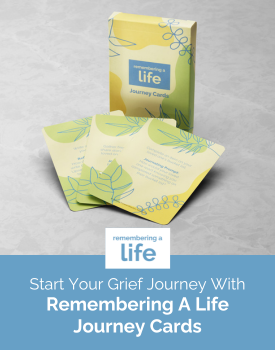Sadly, school shootings such as the one in Uvalde, Texas, are not a rarity here in the United States. Neither are mass shootings in other public places, such as entertainment venues and grocery stores. When they occur, news about them blankets news media and social media, and often features in conversations among friends and family. Children hear about these tragedies. What’s more, children in many school districts are trained in gun-violence prevention measures such as Know the Signs and active-shooter drills. They are, in essence, taught to anticipate violence and loss.
No matter how much we would like to protect them from these horrific realities, our children are all too aware that they happen. With awareness come uncertainty and grief. It’s normal for kids to be afraid that a shooting will happen in their school. It’s normal for kids to be sad, angry, and curious about these massacres. We help children by affirming their normal thoughts and feelings and creating an atmosphere of open communication and love.
We cannot untraumatize traumatized children, but we can do our best to help them feel heard and safe. As a grief counselor and educator for more than forty years, I humbly offer the following suggestions.
Do communicate at a given child’s level of interest and understanding.
Each child is unique and will have unique thoughts, feelings, and questions about traumatic events. Younger children will have different understanding and questions than older children. Age is just one factor, however. Different kids process fears and concerns differently. Follow each unique child’s lead. Don’t overexplain; instead, allow their questions and concerns to guide you. Communicate with them in words they will understand and in ways they will feel cared for.
Do know the difference between grief and mourning.
Grief is everything we think and feel inside about a loss. Mourning is expressing those thoughts and feelings outside ourselves. Mourning isn’t just healthy—it’s necessary. Children need to be given safe places and opportunities for mourning in the presence of compassionate, understanding, nonjudgmental adults.
Do be aware that children mourn in doses.
Grieving children don’t express all their grief in one conversation or day. Instead, they continue to feel their feelings and need to express them in doses over the course of months and years. What’s more, their grieving needs will change as they grow older and develop new understanding of any losses they may have experienced when they were younger. Grief lasts a lifetime, and it is our responsibility to continue to care for grieving children as they grow into grieving adults.
Don’t assume that children are unaware of or unfazed by school shootings that may have taken place far away from where they live.
We are all grieving the violent deaths of children in Uvalde, Texas, and other communities affected by traumatic loss. Like us, children think and feel things inside themselves about such tragedies. In other words, they grieve. Our job as caring adults is to be on the watch for their normal and necessary grief, to listen to and love them, and to give them ongoing opportunities to mourn.
Do be aware that if children incorporate loss violence into their play, this is usually normal.
Imaginative play is how young children process new information and work through difficult thoughts and feelings. Always wrap them in understanding and empathy before placing any restrictions on their play.
Don’t assume that children are resilient and thus “fine.”
Children are indeed resilient, but their traumatic experiences also become part of them. As I said, there is no such thing as untraumatizing traumatized children. They learn early that life is not only challenging—it can be violent, random, incomprehensible, and deeply unfair. The only way to help them continue to love life even as they incorporate these tragic realities is to make them feel extra-safe, extra-seen, and extra-loved.
Do model your own grief and mourning.
Grieving kids need to know that grief and mourning are normal, healing responses to loss. If you’re sad or angry, shocked or anxious, it’s healthy to let the children in your life know that you’re feeling these things. It’s good to cry if you feel like crying.
Do help children feel safe.
Anything you can do in the aftermath of a school shooting or other traumatic loss to help children feel safe is a good thing. If they have questions about the security at their own schools, look into the protocols and answer their questions. Work to improve safety as much as you can. Ensure they feel safe in their own homes. Create and stick to routines and boundaries. Be gentle and kind but also firm when it comes to rules that are for their own good. Listen well, and speak less than you listen. For children who are particularly anxious, seek out professional counseling.
Do help children feel seen.
We often call grieving children the “forgotten mourners” because their grief can be less apparent and they may seem to need less direct grief support. You can help them feel seen by consistently observing their play and behaviors and giving them extra attention. If you are understandably caught up in your own grief, ask other adults to help you pay close attention to the children in your care.
Do help children feel loved.
Children deserve our unconditional love. To help children feel loved, we give them attention and good care. We ensure their basic needs are well met (food, shelter, clothing, etc.), and we make it clear that we care about their wellbeing. We also make time to have fun with them. Children are our most precious gift. Together we must treat them as such.


